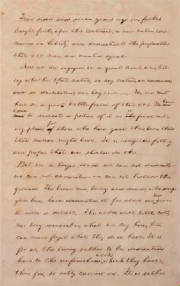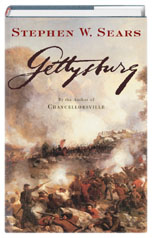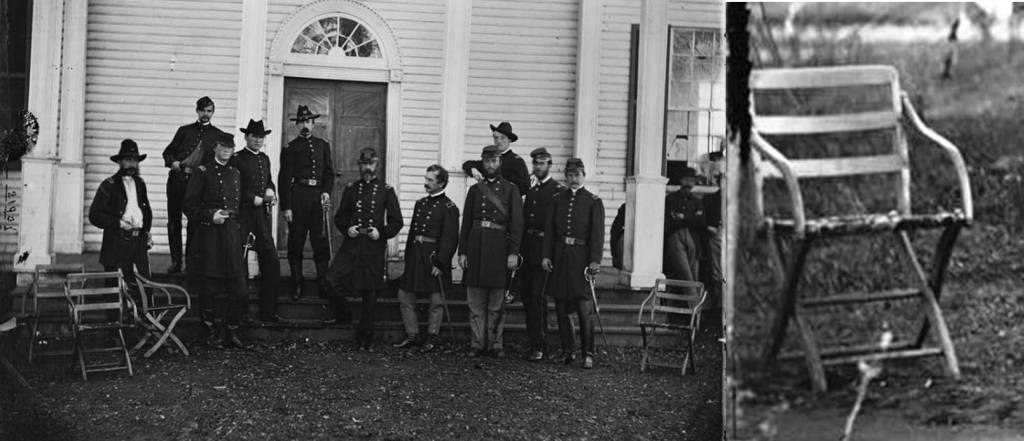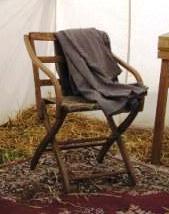|
|
 |
Sources can be divided into three categories: primary, secondary, and tertiary.
In this section we will examine what types of sources fit into each of these three categories and how suitable those
sources are for research into our impressions.
| The Gettysburg Address |

|
| Click on the image to go to America's Story, The Library of Congress |
As the name suggests, primary sources are the very foundation of the historical
record - they came first; they are the most important; they are the basic building blocks of our historical knowledge.
Examples of primary sources are something written during the period under study, like Meade's report on the battle at Gettysburg,
photos of the dead lying on the field after the battle, or Lincoln's "Gettysburg Address." A rifle that was used during the
battle, newspaper articles about the battle, and a soldier's letter home after the battle are all primary sources. A
source that is "primary" to the battle at Gettysburg comes from that time. It existed then or was created soon thereafter.
| Gettysburg, by Stephen W. Sears, published in 2003 |

|
| Click on the image to go to the Houghton Mifflin Publishing Company |
When a historian reads primary sources, interprets those sources using professional
criteria, and writes an article or book about the findings, that writing is called a secondary source. Stephen W. Sears'
acclaimed work Gettysburg is a secondary source. Sears was not present at the battle and must rely on source material,
both primary and secondary, to write his book. Living history demonstrations and reenactments are secondary sources. Those
participating in these events have, hopefully, conducted the necessary research in primary and secondary sources to accurately
represent what happened in the past. If a reenactor's research involves only secondary sources, with no primary sources, then
the reenactor's impression is no longer a secondary source demonstration. It becomes a tertiary source because it relied solely
on secondary sources for its research.
| General Meade, his staff, and their chairs |

|
| From the Library of Congress, American Memory - click images to enlarge |
Here is an example of how a 21st century craftsman used primary
sources to create a reproduction which is a secondary source. It is not the actual chair - it is an interpretation of
what the chair in the photograph was.
| Reproduction of Civil War chair |

|
| This chair is used in U.S. Sanitary Commission and Regimental Sutler impressions. |
Above is a photograph of General Meade and his staff. Scattered
before them are a number of chairs. Soldiers did not carry chairs like these with them, but officers, surgeons, or anyone
else with a wagon could. Next to the group photo is a close-up of one of the chairs. Click on the photograph to see an enlargement.
To the right is a reproduction chair modeled after chairs like those used
by General Meade. The chair uses a piece of carpet for the seat. It was built by a midwestern craftsman and purchased through
a commercial sutler.
We reenactors and living history demonstrators can benefit from reading secondary
source material. The advantage is two-fold. First, the historian has done much of the digging, reading and weeding for us.
We also gain a professional opinion on the topic. The second advantage to using secondary sources is the bibliography found
at the end of the work. A long list of valuable primary and secondary sources is included in every professional historical
writing. Rather than wading through the library card catalogue or the computer's search results, we find a ready-made list
of potentially valuable sources. The bibliography is often the most valuable section in a secondary source.
| The Effects of Interpretation |

|
| Primary, Secondary, & Tertiary Sources |
Are school textbooks secondary sources? No - they are referred to as
"tertiary sources." This means that authors have used secondary sources when writing their texts. They do not use primary
sources. Consequently, when students read a textbook, what they read has been interpretted by a group of historians, and those
interpretations have subsequently been diluted by a textbook writer. The graphic at the left illustrates this concept. The
farther away from the primary sources you get, the more blurred and diluted your interpretation can become.
Is it any wonder that students - including many current historians
- hated history in high school? Primary sources are much more exciting, and the interpretations in secondary sources are more
relevant. Tertiary sources can be the equivalent of eating watered down baby food.
Before you begin your journey into historical research, you must realize
that not everything available either on the World Wide Web or in the library is of value to you. You must evaluate whether
or not your sources can be trusted. In "Internet Research" and "Museum, Library, and Archive Research" you will
find guidelines for doing this. Click on one of the links below to continue with Internet or non-Internet research.
|
 |
|
|
|
This site was created in October,
2004. All original material is copyrighted and any blame or credit should be attributed to the owner and operator, Van
O. Furrh.
|
|
|
 |

